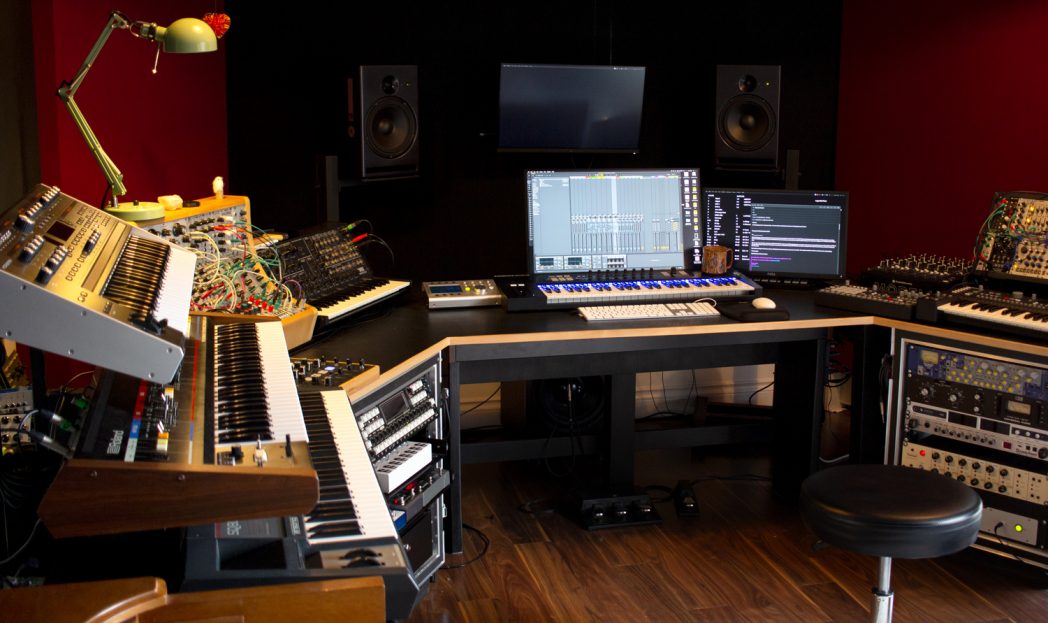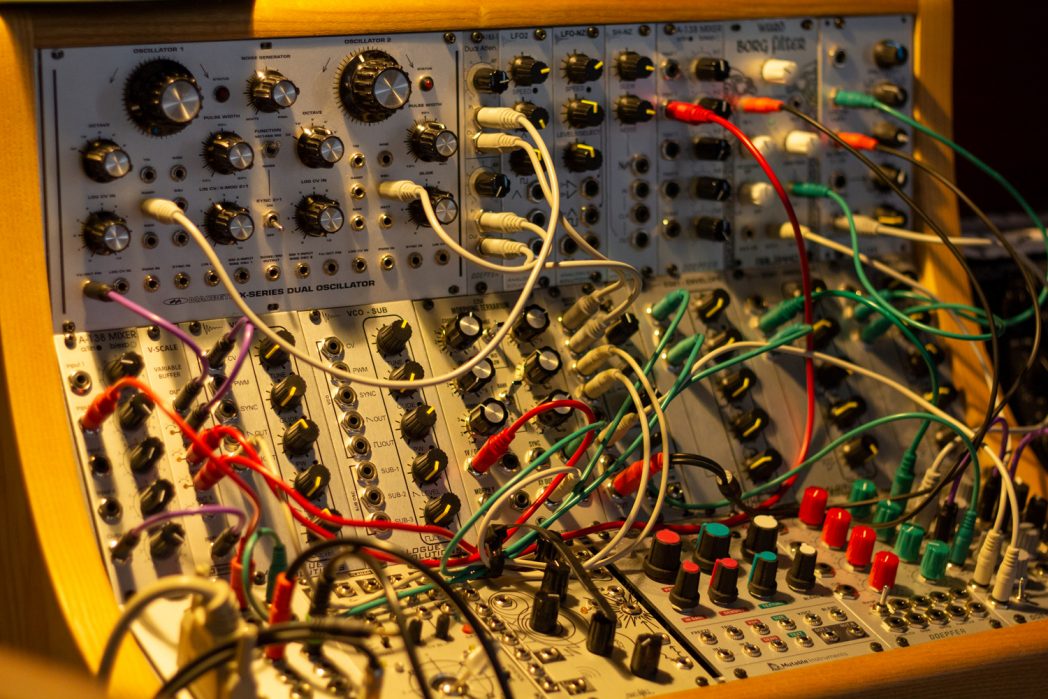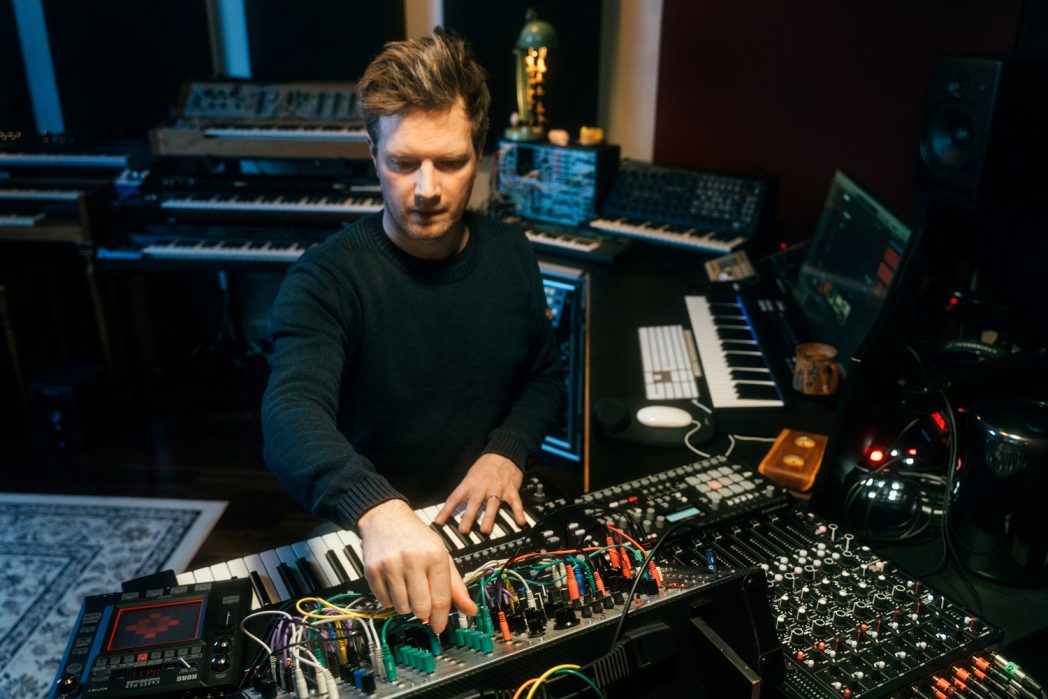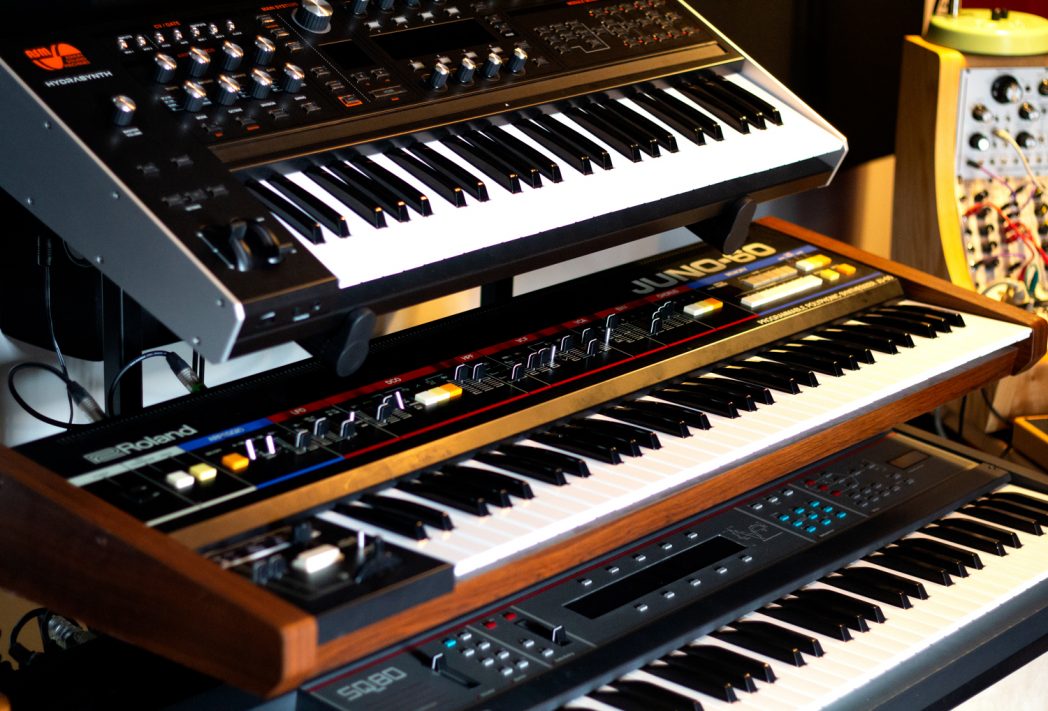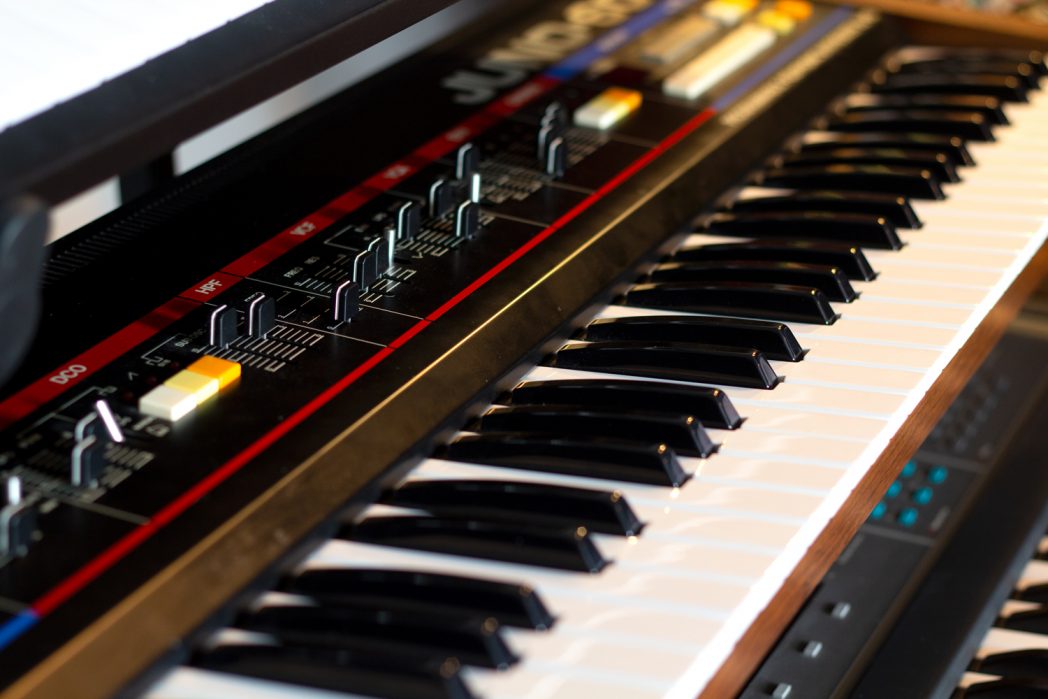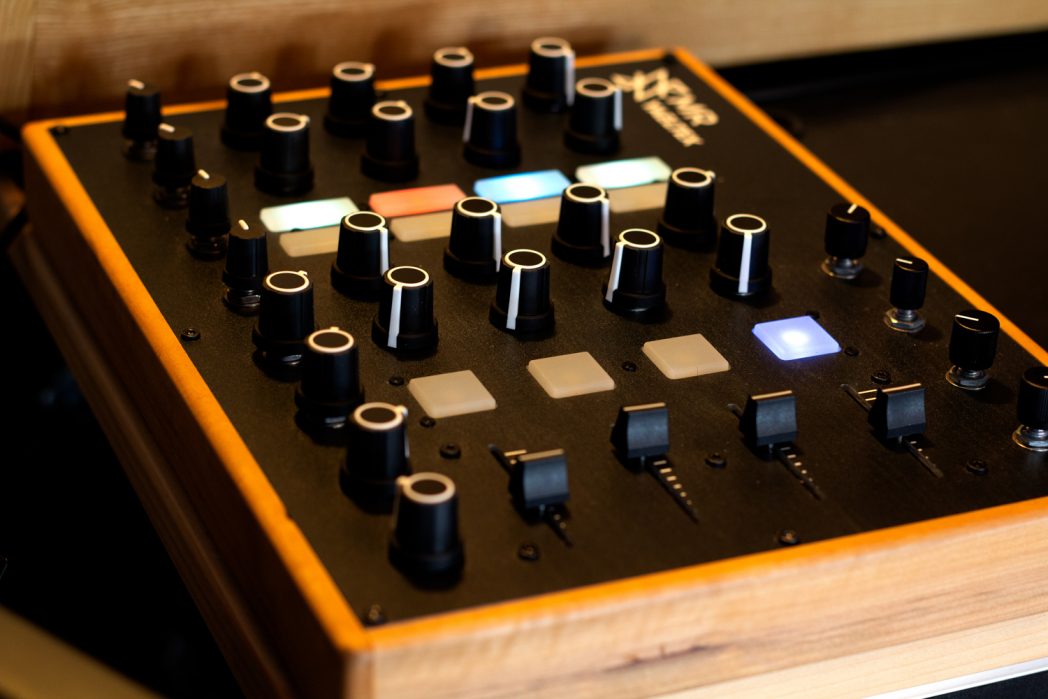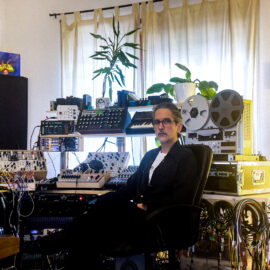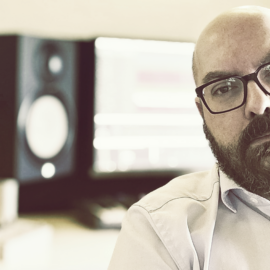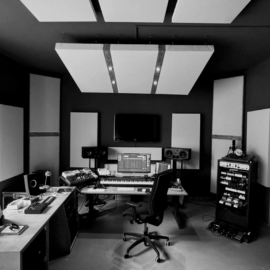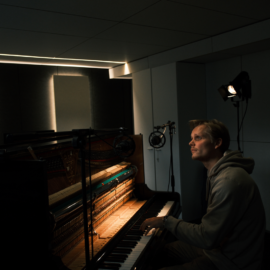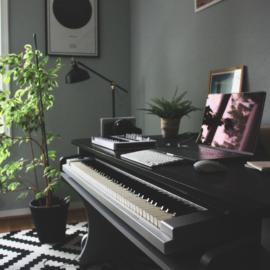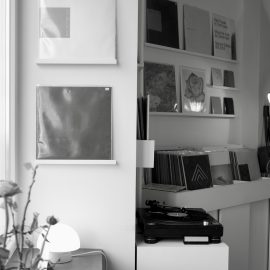Let’s start at the very beginning. Can you tell us how you got involved in composing, and what was your very first piece of gear?
My mom bought a Casiotone MT65 in about 1985 when I was 8 years old. I basically took it as mine, and that was the beginning! I was taking some piano lessons, and really fortunately for me, my piano teacher was also interested in music technology and co-owned a music store in my area. So I spent my childhood years trying out all these really new and exciting keyboards and synths. I think I have always been equally interested in ’sound’ as much as ‘music’ and so these electronic instruments really inspired me to experiment and create.
My family weren’t musicians but were really into music. My parents took to me see Jean Michelle Jarre when he played the Docklands concerts in London in 1988, and although it was really cold and really really wet, something in that experience still lives with me today as a truly inspirational moment.
When I went through school, I was always into electronics, and one of my teachers who knew this found a Korg MS10 that someone had thrown in a dumpster at the school, and he dug it out and gave it to me. At around the same time, in the local music store where I had a part-time job, someone brought in a Roland SH09 and wanted to part exchange it for a “newer better” home keyboard. And so I started this little setup with the MS10, SH09, and a Fostex 4 track cassette.
I still remember that as being a really creative time, although I dread to think what some of that material would sound like now if it was still around!
Much later, through some very fortuitous meetings, I ended up getting some work as a film programmer, making electronic sounds for movies, usually to add some more drama and energy to orchestral scores, and this is still something I do today, and I think it was in that world of the combination of ‘classical’ orchestral composition and electronics, that I really started to try and find a voice of my own.
I started making my own albums as a way to refine that, and was just putting up projects on Soundcloud, but it wasn’t until 2016 that I put out my first ‘official’ album on a label. Enveleau is my 4th ‘official’ album.
How many different studio iterations have you gone through, and what does your final setup look like right now?
I think in terms of radically different setups, I’m on 8 right now, although it develops and morphs all the time. At the moment, I have a studio in my home on Salt Spring Island in Canada, and it has 3 slightly different zones. I’m always trying to find the balance between options and limitations, and at the moment for me, the best solution is to have a few different little stations that are independent of one another, but kind of self-sufficient to make a track on. So one station at the moment has an Elektron Analog 4 and RYTM, a small Eurorack setup, and a DJ mixer. The next station is more traditional synth-based with a Juno 60, Hydrasynth, Ensoniq SQ80, and another small Eurorack, all going into an Ableton template that has some loopers and sends setup, and being controlled by a custom midi controller from Yaeltex. The third one is a Mac running Logic, which can record the first two setups, and hosts some soft synths and sound design tools.
Tell us about your favourite piece of hardware.
So tricky! I think I would have to say my main Eurorack setup, which although it’s modular, has had the same modules in it, and literally the same exact patch, for about 5 years now! I just got really into using Eurorack to design my own synth, but then set it up with a pretty permanent structure and routing. That makes it really fast to use, and also possible to really learn it in a way that I think is more difficult if things are changing all the time. When I first got into Eurorack, it was still relatively unknown, and there were not that many manufacturers out there. I went to visit Tom Carpenter from Analogue Solutions in Birmingham to look at some of his modules, and one of the reasons was that I really wanted an MS20, but couldn’t afford one, and he had some modules that were based on the MS20. It was way cheaper to put together a similar setup using the modules than it was to buy an MS20! Of course, in hindsight that was a false economy because then I spent way more on other Euro rack stuff, and a few years later, also bought an MS20! But, the process was really interesting, and I learnt a huge amount about instrument design and why some synths sound one way and some synths sound another way. I like Tom’s design approach and he has some really great instruments out at the moment.
A close second is Analog RYTM, and then Hydrasynth….!
And what about the software that you use for production?
I have used Logic since version 5 when it was Emagic. So that’s where I’m most comfortable in terms of a DAW, although I also use Live a lot. I have a template in Live which is controlled by a really great midi controller made by a company called Yaeltex in Argentina. Some of my synths are routed into that Live setup, and the controller lets me use it kind of like a DJ mixer, with loopers, FX sends, Filters, EQs, and then those separate outputs are routed internally from Live into my Logic ‘recording’ template, which is used more like a tape machine for capturing, and then mixing.
I’m really interested in interface design, and how some synths and hardware just invite you to be inspired by them, while others just do not. I try to carry that forward in terms of how my recording templates and Live setups are laid out. I put a lot of thought into how things are routed, how to route them differently and quickly, and be able to work with lots of different setups without losing any flow in the studio.
Strangely, probably the most useful software that lets me do this is the RME TotalMix software that comes with their audio interfaces. I have a pretty elaborate Keyboard Maestro setup that does all these different routing setups in TotalMix, and then routes the relevant things back into Logic. It’s basically an automated patch bay, but one where you can change the levels of things on a per patch basis. For example, all the F keys on the computer keyboard are setup to trigger Keyboard Maestro to trigger macros that send out streams on midi messages to TotalMix. So F2 sends the output of the Juno 60 to a Focusrite 430 channel strip, then out to a sans amp, parallel to a Strymon El Capistan and Eventide Space, and then routes all the individual outs of the pre’s and FX back into channels in Logic. All with one button! Then the other F keys do different routings for different synths. It took a while to setup, but I use this so many every day and it saves me a huge amount of time.
Is there a particular piece of gear that you’re just dying to get your hands on and do you think one day you’ll have it?
I’ve always wanted an Oberheim OBX! I’m a massive fan of some of the earlier Prince records where he used that a lot, and although it’s probably pretty limited, it just always has this sound that really connects for me. One day? I don’t know….I can go two ways with vintage gear, I love the idea of it, but I also think the innovations in new gear are so interesting and inspiring.
Can you please share some aspects of sound design in your work?
I love tracks that start with a sound palette that’s almost outside of the music, and yet creates this immediate zone that you are put into. For example, the first few bars of Björk’s Hyperballad – the really high string harmonics and sub bass, for me that’s a sound design choice as much as a musical choice. Or the first 20 seconds of “Late to the Flight” by LUMP, again not really sound design as such as its all real instruments, but for me, it’s more a sound design texture. I like to try and create those kinds of moments if I can. It’s really difficult! I like to experiment with field recordings, and massive pitch shifts in Live, and Paul Stretch, and see what kind of textures I can come up with. Something to try and evoke an emotion. Those things might end up really really low in a track, but there’s always something there. In terms of synth sound design, the Eurorack stuff has been really great for that. Also, the Hydrasynth, which I think has the deepest and yet easiest editing process of any synth I have used, hardware of software. If I get a new synth or plugin, I will usually spend a few weeks making a collection of ‘launch pad’ type sounds that cover a lot of ground, and then I’ll use those as jumping-off points when I want to create a new sound.
Any particular new techniques that you tried out for your new album?
I think the main thing that was new for me to try on this record was giving myself time to leave things alone! I started so many ideas, and sometimes it’s difficult to let things mature and evolve in their own way. I had these periods of time, maybe 2 months, where I would not listen to any of the ideas I had started, and then come back to them and see which ones were still interesting to me. I got to hear them (almost) with new ears which is hugely beneficial for me. Details that I might have thought were really important to the idea when I started, turned out to be not important at all, and then other details would come to the forefront. That time for the idea to ‘brew’ was really important, and something that I hadn’t really done before. I think maybe working in film a lot, where you often just have to punch through until it’s done, I had got really used to that methodology. But I love the idea that your own projects and your own perception of your ideas, can evolve by themselves when you leave them alone.
I was also really trying to mix in mono for this one. I love huge stereo, but I’m often noticing how records that I love, and sound great, are very often pretty mono sounding, with stereo “seasoning”. They don’t rely on the stereo for the impact, the impact is all there in the mono, and then the stereo just takes it even further. I think it’s really easy, particularly with synths, to make everything really stereo sounding, and sometimes lose some of the width impact by doing so. For this record, I really tried to sculpt out the parts so that they work really well in mono and then the stereo aspect is a sonic bonus! I’m not sure how successful I was at this, but it was an interesting process to look into.
What does your live setup look like, and what do you bring with you when you travel for an extensive tour?
My live setup is based pretty much around the first station that I was describing above. Elektron Analog 4 and RYTM, and a small modular setup, all running into an RME interface with a laptop and Live. That’s also what I take with me if I’m travelling for a while, as it’s all pretty suitcase friendly. I have done shows that are very reliant on Live for playback, and ones where everything came from the Elektron boxes, and the only thing I triggered in Live were scenes that changed mixer settings – so effectively using Live as a digital mixer with recall. I think I have now landed somewhere in between those two extremes. Gigs which rely too much on playback are pretty safe, but for me as a performer, they are just not nearly as fun! I think the Elektron boxes are pretty unbeatable as live performance devices. They are quirky, and the learning curve is pretty steep, but they are just amazing for performance I think. The way you can recall stuff, then really mess with stuff, then reload your sounds to recover after a build or a drop, is something that I don’t think you can do on a lot of other gear.
What is the most important environmental aspect of your current workspace and what would be a particular element that you would improve on?
This is something that also really fascinates me! I’m really lucky that my current studio setup has an incredible view out of big windows over trees to the ocean. It’s insane, and I spend a lot of time looking out of the window. This is in contrast to the previous 20 years where I don’t think any of my studios had windows! I love having the windows and the view, but something in me has this feeling that there’s an increased level of focus that you can have when you are more ‘inside a box’! For this reason, I will often pull the blinds down over the windows for a few hours if I really want to focus on something. Which is crazy! But for me, it seems to work. I have always really liked red in studios too. I have some big bass traps in the front corners of my current studio which are a deep red color. They always seem to put me in a calm work mood. I think the color of your studio surrounding is really important, and I could definitely improve on this more.
What can you tell us about your overall process of composition? How are the ideas born, where do they mature, and when do they finally see the light?
It changes quite a lot. My ideal idea of a workflow is to come up with a concept in my head, design sounds that fit that concept, write music with those sounds, then mix the track. In reality for me, the first three of those get mixed up a bit. But I think looking back on projects that I’m most happy with, they have all been ones where the concept was pretty defined before there was any music involved.
On the other hand, jamming is fun, and I will often just come up with sounds and riffs that end up as a track, and then at some point, I have to decide what that track is really about. I find that the longer it takes to have that concept there, the longer it will take me to move on and complete something. I feel like if you have a strong concept, then all the micro-decisions you have to make along the way – is this sound better than this – does this need more reverb – hows this EQ – etc. – are all really easy things to answer. If I don’t have the concept, I can spend ages worrying about all those things!
So the ideas are born out of a concept, which for me usually comes from a good book I have just read or a situation I have found myself in. Or sometimes they are born out of a synth jam, to which I try and attach a concept later. I usually have way more ideas on the go for an album than actually see the light of day. This latest project had about 30 active ideas along the way, and only quite near the end do those get reduced down into the tracks that end up on the record. I find that a lot of the time, these ideas can all be terrible, until they’re not! You can have an idea rolling around for months, and nothings really sitting right, and then you add one element and suddenly the idea turns into a complete concept.
After the piece is complete, how do you audition the results? What are your reactions to hearing your music in a different context, setting, or a sound system?
For me, the most radically different perception of my own music comes from playing it to someone else. Way more than a different sound system, or situation, that the first few times you play an idea to someone else is the most informative. They don’t even have to say anything. You just somehow hear it through their ears and you know what to do to make it better. Or if you’re really lucky, you actually get to enjoy it more!
I have become very reliant on my own speakers in my own studio, and so I don’t really audition my material on other systems before I release it. Heba Kadry who has mastered all my records is a fabulously talented engineer whose input I greatly value.
I’ve also had the chance to listen to lots of music on really big systems with some of the other artists who I work with as a Music Director. It’s a really great learning experience to be able to listen to stuff on a huge system and change the balance of stems to see what works and what doesn’t, even if it’s not your own music, you can really start to get your head around what translates easily and what doesn’t. Also learning that stuff from the front of house engineers who are dealing with that day in day out has been really valuable to me.
Do you ever procrastinate? If so, what do you usually find yourself doing during those times?
I have a 5-year-old daughter, and so I find I procrastinate a lot less than I used to simply because there’s less time available now! I have really had to embrace the idea of using time, particularly creative time, efficiently. And in hindsight, I’m kind of disappointed that I didn’t start doing that years ago because I would have got loads more creative stuff done!
What gets you inspired?
People that are passionate, ideas that are forward-thinking, problem-solving.
And finally, what are your thoughts on the state of “electronic music” today?
I can’t help but think that it’s pretty amazing! The price of entry into the marketplace of being able to create and distribute music is lower than it’s ever been, and that has allowed for some really amazing creation. If I look through records I’ve bought over the last few years that I really like, I reckon half of them are made by people that possibly would never have been able to put a record out 10 or 20 years ago. And I’m really happy to be a part of that.
